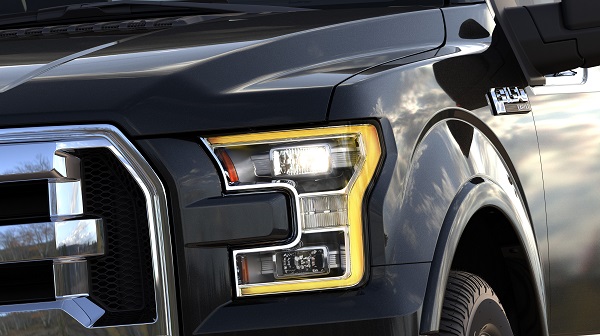‧Ford Motor Company lighting innovations are guided by human psychology, as lighting inconsistencies and contrast irregularities can cause irritability and even depression
‧First debuting on Ford F-150 pick-up, and now available on the new Ford Fusion, the automaker’s Crystal Diamond Light is designed to disperse broad, even lighting that can help reduce irritability while improving efficiency by up to 62 percent – lowering cost and enhancing aesthetics
‧Interior lighting designed with the human eye in mind to offer optimal light perception and good contrast for night vision; because men and women see colors differently, the shade must be universally accepted by the color cones of both sexes
 |
|
Ford lighting designers and engineers are working on automotive lights that make people |
In the niche world of automotive lighting design, decisions are judiciously made with the knowledge that each can impact human psychology.
Consider this all-too-familiar scenario:
At the end of a long workday, there is still a traffic-clogged roadway to contend with on the drive home. Fellow commuters are stuck too, growing impatient, irritable, and often distracted. As the minutes tick away, the sky grows darker. By the time the car pulls into the garage, the driver is grumpy, even a bit depressed.
Ford lighting designers and engineers say this irritable mental state is, in part, due to poor automobile lighting and how humans psychologically cope. These lighting experts are working to make life a bit brighter.
“We know that gradients and homogeneity affect people’s moods,” said Arun Kumar, Ford optics expert and design engineer. “We also know the eye wants to focus on contrast changes and other inconsistencies in lighting – it’s an automatic function of the brain that can irritate mood.”
The latest solution is a LED lighting innovation Ford calls Crystal Diamond Light. The lighting improves efficiency up to 62 percent while lowering cost. It also miniaturizes the fixture, an aesthetic desired by designers. The diamond-like facets of the lens offer even, broad distribution of light.
Crystal Diamond Light first debuted on the Ford F-150 pick-up and will trickle down to other models starting with the new Ford Fusion.
“The efficiency of this lighting not only helps to stabilize the psyche, but also has the potential to affect global environmental savings,” Kumar said. “As we democratize this lighting innovation to a broader audience, the impact could be significant, with millions of gallons of fuel potentially saved on a global scale.”
Consideration of human physiology is also a factor with interior lighting.
Around the time the world was preparing for Y2K and the predicted doom that would ensue, Ford began work to update its Corporate Green interior dash lighting. The mandates included choosing a color that is pleasing to the eye, one that provides a higher quality of lighting, with good contrast for twilight and night vision. And because men and women see some colors differently, the shade had to be universally accepted by the color cones of both sexes.
“Another obvious issue was to design for people who have color deficiencies,” said Shannon O’Day, Ford interactions and ergonomics core engineer. “You can’t use a deep saturated red or green for dash lighting because those are colors people most typically have problems with. Eight percent of the global population has this issue, and most are male.”
Red and green are typically reserved for emergency buttons, such as hazard lighting.
Designers and engineers opted to light the Ford vehicle dashboard in Ice Blue™, a color that is more easily seen and perceived as brighter by the human eye, and one that cuts through the clutter, O’Day explained.
While Ice Blue is the color of choice for illuminating the Ford dashboard, an available feature for many Ford vehicles allows customers to change ambient lighting colors with in-car controls.
Still, it’s the physiology that matters most to designers.
“Color is one among many factors that make lighting functional and pleasing,” O’Day said. “In the end, it’s really about the eye, what it perceives, and how it affects the driver.”












